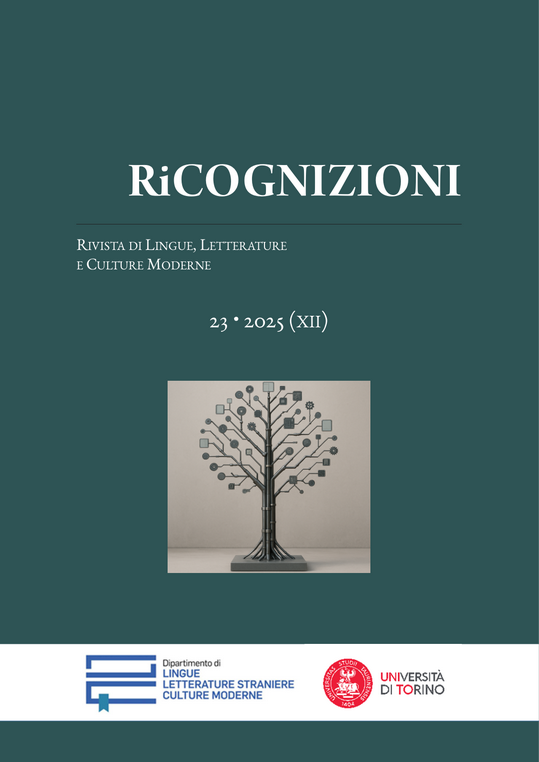Literary Celebrity in China: From Vocation to Profession
From Vocation to Profession
DOI :
https://doi.org/10.13135/2384-8987/11907Mots-clés :
Literary Celebrity, Vocation, Profession, Influencer, NarratorRésumé
Before literary celebrity in China emerged as a cultural phenomenon and industry akin to the celebrity culture described by Turner (2014 [2004]), ancient China had already witnessed the existence of phenomenal – if not charismatic (Weber 2004 [1919]) – figures endowed with the extraordinary power of words, legitimate authority, and above all, an innate vocation to transform the world: the shi (writers, intellectuals, and politicians). However, China’s tumultuous modern era forced these intellectuals to recalibrate their ambitions. Entering the contemporary age, they were further required to adopt a more modest, “people-centric” narrating language to coexist with the increasingly multifaceted expression mechanism shaped by a seemingly never-ending technological evolution.
This paper first explores the unique role of the shi as intellectuals, cultural figures, and political influencers in ancient China. It then analyses their shifting vocations in modern China, as they sought to preserve, reform, or reconstruct from scratch the Chinese civilization. Finally, it investigates their complex modes of existence in contemporary China, marked by a curious “absence” from traditional media and yet a pervasive presence on new media platforms. This transformation reflects their “forced compromise” in adopting new narrative languages and modes of expression shaped by emerging technologies, ultimately raising some pressing concerns: Do words still hold power in the digital age? Has technological mediation rendered those multi-formed literary celebrities (mingren, mingliu, mingxing, wanghong, etc) more visible or invisible, more ordinary or extraordinary?
Téléchargements
Publiée
Comment citer
Numéro
Rubrique
Licence
RiCognizioni is published under a Creative Commons Attribution 4.0 International License.
With the licence CC-BY, authors retain the copyright, allowing anyone to download, reuse, re-print, modify, distribute and/or copy their contribution. The work must be properly attributed to its author.
It is not necessary to ask further permissions both to author or journal board.








